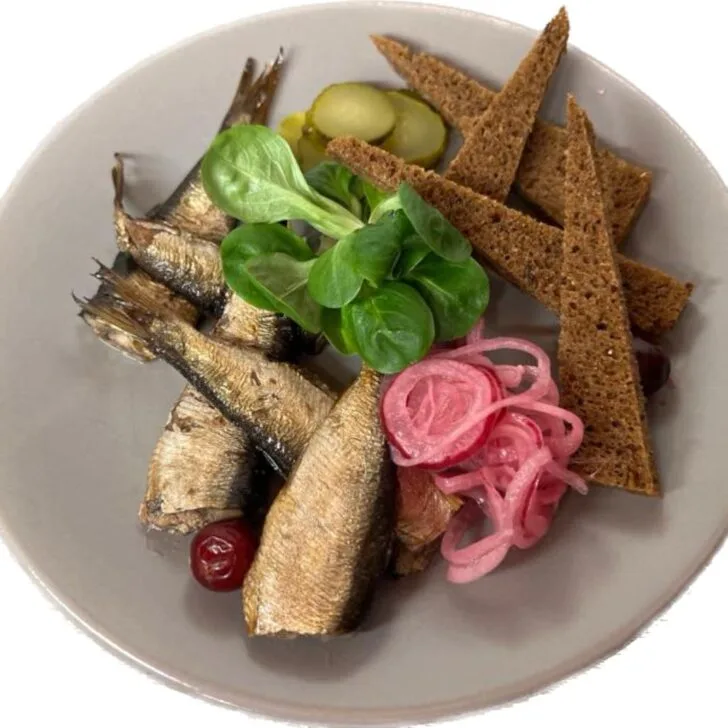We may receive a commission if you make purchases through affiliate links (at no extra cost to you). Read why our approach to travel is different.
There is a myriad of things to love about Japan. The rich culture, the harmony of modern and ancient architecture sitting side by side, the welcoming people. And the abundance of traditional Japanese snacks.
Traditional Japanese snack food is delicious and has me running straight to the nearest konbini (usually 7-Eleven) as soon as I land on Japanese soil and get off the plane.

From well-known snacks like pocky sticks to my personal favorite Japanese snack street food, Ichigo Ame, here are the best traditional Japanese snacks to try as soon as you land in Japan.
Skip to...
1. Pocky Sticks
Pocky sticks are both traditional Japanese snacks and a global phenomenon. They were first invented in 1966 by Glico and now you can buy them in almost every country in the world.
But you’re likely to find a wider range of fun flavors of Pocky sticks when you arrive in Japan.
So what exactly is Pocky? Well, these are slim crunchy biscuit sticks. One end is exposed (giving you something to hold on to for a snack on the go) and the other is dipped in flavored chocolate or coating.
Some of the best flavored Pocky sticks to look out for include matcha and charred butter. If you’re looking for something a little more universally appealing then the strawberry pocky sticks are also delicious.

If you visit during the spring then you can also try limited edition sakura flavored pocky sticks, which are pale pink and have a gentle, floral taste.
Finally it’s worth noting that pocky comes in different shapes and sizes. The standard sticks are the most common (you’ll find these everywhere) but for something more convenient and handbag friendly you could also choose one of the shorter and chunkier midi sticks. And if you want a more substantial snack then look for the giant pocky, which are wider, and two inches longer, than regular pocky sticks.
2. Ichigo Ame
You won’t find this in the corner konbini, because Ichigo Ame is a typical Japanese street food, as well as a traditional Japanese snack. But it is well worth seeking out.
Ichigo Ame is one of my favorite Japanese snacks because it appeals to my sweet tooth. This is another popular Japanese snack food so you won’t have any problem finding these, especially near temples and other big attractions. It’s the perfect snack for a hot summer’s day.

Ichigo ame translates to mean strawberry candy. It consists of strawberries placed on a skewer and then covered in a melted sugar coating. The sugar coating is hard, the fruit is soft and the contrast between the two is unbeatable!
You can also find a version of this treat that alternates strawberries with firm muscat grapes. This is my favorite and the one I just can’t resist! It contains enough sugar to be nicknamed diabetes on a stick, but I still order a skewer every time I walk past one.
3. Tokyo Banana
One of the most popular souvenirs in Japan, these traditional Japanese snacks are the official souvenir sweet of Tokyo. They are manufactured by Grapestone Co and are individually packaged then presented in pretty boxes.
Tokyo Bananas are soft sponge cakes shaped like a banana (as the name suggests) and then filled with a light cream filling. The original version has a banana cream filling, but there are now dozens of flavor variations to choose from.

You could get a coffee milk version, the a cute raccoon face printed on the banana. A banana custard cream with a sakura scent and sakura flowers printed on the sponge. Or a chocolate banana flavour, which has a chocolate flavour sponge cake that is filled with the traditional banana filling. This is printed with a cute cat face.
I’ve always come home from Tokyo with a box of Tokyo Bananas. They’re a great traditional Japanese snack and a taste of the city. Having tried several flavours, I think the original Tokyo banana is the best, but I know this is topic where people have very strong (and very different) opinions.
4. Famichiki
Had enough sugar for one day? Some of the best Japanese snack foods don’t contain any sugar at all. In fact, perhaps the most iconic konbini snack is famichiki: the cooked chicken fillet exclusive to Family Mart.
Now this might not be a traditional Japanese snack but it is one of the most popular snacks in Japan right now and it has achieved cult-like status with tourists in the country.

Famichiki is a boneless fried chicken breast served in a distinctive yellow and white striped paper bag. You might be wondering what’s so special about fried chicken? You can get this in every country in the world, right?
Well that’s true, but the fact is Famichiki is delicious, despite being a budget buy from a convenience store. It’s crispy on the outside and incredibly juicy in the middle.
Famichiki also comes in spicy and extra crispy varieties, but as is so often the case, the original is the best. You can’t mess with perfection, and if you want something hot and delicious without breaking the bank then this is the best Japanese snack to choose.
5. Melon Pan
The first time I ate melon pan I was surprised – it didn’t taste anything like melon! That’s because this popular snack has been given its name because it looks like a melon, not because it tastes like one.
This traditional Japanese snack makes a great on the go breakfast. It’s a sweet bread topped with crunchy cookie dough which cracks during the baking process to lend it the appearance of a cantaloupe skin.

Like many traditional snacks, melon pan has evolved over time and there are several variations of this snack bread served, depending on the bakery you choose.
There are versions filled with custard or fruity jam. If you visit Tokyo Disneyland then you’ll even find a cartoon character-shaped version that does taste like melon.
Even the origin of melon pan is in dispute with some claiming it was created in 1910 by an Armenian baker who moved to Japan. Others claim that the Kinseido bakery in Kobe invented the bread. Regardless of where it came from, melon pan is a delicious and filling snack, making it a great choice if you want something hearty that you can eat on the go.
6. Tamago Sando
Bear with me, because I’m about to explain why you need to fly all the way to Japan to eat an egg sandwich (tamago sando). These famous sandwiches are the best egg sandwiches that you can get anywhere.
The reason Japanese egg sandwiches are superior? They’re soft, fluffy, and delicious. They’re made with Japanese kewpie mayonnaise which is much creamier and more tangy that their European or American equivalents.

The quality and freshness of the eggs is of the highest standard too. These are then chopped and whipped with the mayo before being piled generously on snow white bread.
The sandwich is traditionally made with Japanese milk bread. This is the softest and fluffiest of the Japanese breads. It’s a symphony of simple ingredients turning into something spectacular. The whole is much more delicious than the sum of its parts.
This traditional Japanese snack is so good that I’m happy to skip a restaurant lunch and grab an egg sandwich instead.
7. Mochi
Taking the title as the most popular traditional Japanese snack is mochi. Mochi is a universally popular traditional Japanese rice cake snack, often served as a dessert. But savory versions of mochi also exist.

Rice is pounded and stretched to create a chewy and smooth dough. This has an elastic texture and can be molded into small balls.
Mochi can be served plain but the best varieties are wrapped around a sweet center, such as sweet red bean paste, ice cream, or fresh fruit. Mango is popular choice. If you have a really sweet tooth then you can find chocolate variations too.
Traditionally mochi is served as a room-temperature snack so that you can really appreciate the textured, glutenous nature of the treat. But modern mochi can also be served frozen with an ice cream center or deep fried with a crispy outer shell.
Mochi is traditionally pounded by hand with a wooden mallet in a mortar. It’s a popular tourist pursuit in Japan to watch the mochi being pounded before eating the freshly created balls.
Share This Article

Traveling soon? Subscribe to The Insight below and get exclusive access to our personalized travel advice community via WhatsApp so you can ask all your burning travel questions.
Looking for the best comprehensive travel insurance? SafetyWing has you covered.
And for your eSIM in every country, there is only one option we recommend: Airalo.
Read more of our best insights from around the world





